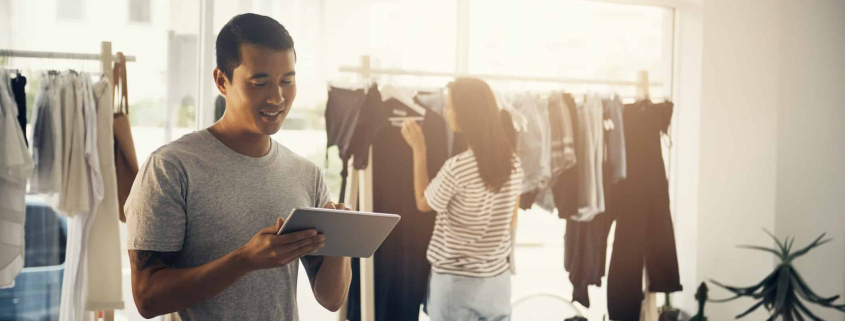As a small business owner, there’s a seemingly endless list of things to worry about, but banking shouldn’t be one of them. Your bank should offer the tools, resources, capabilities and service that are most essential to your business success.
But, what’s the best bank for small business?
Many business owners feel neglected by their bank, according to the J.D. Power 2017 U.S. Small Business Banking Satisfaction Study. If you’re a business owner or CFO who’s considering a banking switch, this guide may help you find your ideal banking match.
How to Find the Best Bank for Small Business
Finding the right bank for your business starts with doing your homework. Here are some of the most important things to consider as you compare banks:
Products and services: A checking account and a savings account are the two most basic financial tools you may need, but in searching for the best bank for small business, it’s important to look beyond that. For instance, you may need help with payroll services, payment processing or inventory management. Wealth management services, cyber security products and services or key person insurance may also be on the list of solutions you need your bank to provide.
Digital banking: Tech is increasingly important among small to medium enterprises, particularly where banking is concerned. Sixty-eight percent of small business bank customers’ interactions are either online or mobile. As you evaluate banks, pay close attention to online and mobile banking capabilities to ensure that you have the access, features and functionality you need to manage your business accounts on the go.
Financing options: You may not be seeking financing for your business right now, but don’t overlook what a bank offers in the way of financing options. Check to see if the bank offers business credit cards, business lines of credit and business loans. Take a look at what’s required to qualify for a loan or line of credit in terms of annual revenue and business longevity. Finally, consider the costs of borrowing with a particular bank. Hone in on the APR for credit cards, loans or lines of credit, as well as origination fees, annual fees and late fees.
Customized advice: Every business owner’s situation is different and there may be specific financial issues that you need guidance on more than others. The bank you choose should be able to offer the type of personalized advice you need most, when you need it.
Deposit account fees: Banking fees can take a significant bite out of your bottom line. In Nav’s 2018 Business Banking Study, 17% of business owners said they chose their current bank because it was least expensive. The biggest fee to watch out for is usually the monthly maintenance fee for checking, savings and money market accounts. Some banks allow you to offset or avoid this fee by maintaining a minimum balance or reaching a certain transaction volume each month, but not all do. Other fees to be aware of include cash deposit processing fees, wire transfer fees, fees for certified or cashier’s checks, overdraft fees, and returned deposit fees.
Deposit account APY: If you’re considering an interest-bearing checking account, savings account or money market account for your business, you want to make sure you’re getting the best rate possible on your balances. Compare the annual percentage yield (APY) for different interest-bearing accounts to see which banks have the most tempting offers. Remember, however, to weigh the interest you could earn on your balances to the fees you may have to pay to maintain your account.
Special incentives: Some banks sweeten the deal for business banking customers by offering special perks or incentives, such as a cash bonus for opening an account or a rewards program that’s linked to your checking account’s debit card. Still others offer discounted rates on financing options, free safe deposit boxes or waived fees on certain services. These extras may be secondary to some of the other criteria mentioned so far but it’s worth looking into see what a particular bank offers.
Convenience and access: If you’re busy running a business, you don’t have time for obstacles when it comes to accessing your accounts. As you scout out banks, consider how many branch and ATM locations there are, and how easily accessible they are to you. Think also about customer service availability. Smaller banks may only offer assistance by phone or email during regular business hours, while larger banks may be available 24/7.
Ease of transitioning accounts over to a new bank: Making the move to a new bank should be a smooth as possible so you’re not wasting valuable time. Some banks offer a switch kit to help you move your accounts over in a streamlined way. That’s something you may want to take advantage of if you want to minimize headaches with transferring accounts.
Reputation and personality: Finally, consider the bank’s reputation and the overall vibe it exudes. A bank that has a track record of engaging in questionable business practices or a reputation for being standoffish to its business clients is one you may want to avoid.
The Best Bank for Small Business Isn’t One Size Fits All
What your business needs from a bank may be entirely different from what another business owner is looking for. Determining which bank is best for you requires an understanding of what your business desires most in a banking relationship. If you’re not sure what that is, think about what’s lacking with your current bank. Then, use that as a guideline to evaluate how different banks may be able to fill in the gaps.











If you’ve heard of the five C’s of credit, you may assume that this phrase is only associated with personal credit; however, it’s also a tool used by lenders to evaluate businesses pursuing credit options.